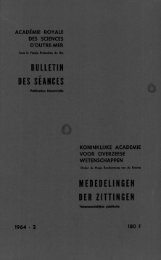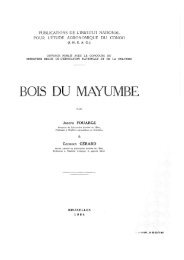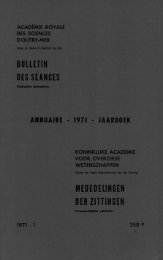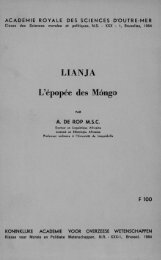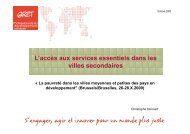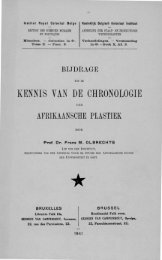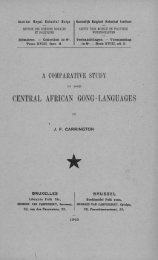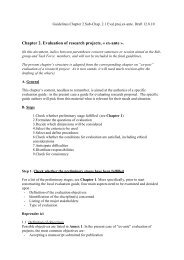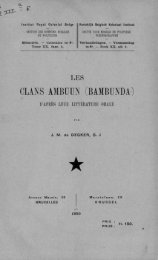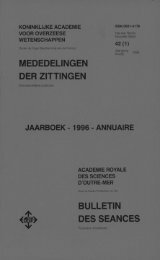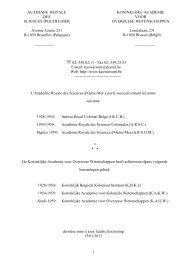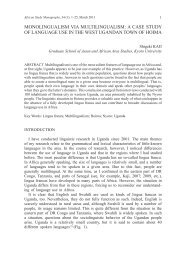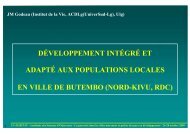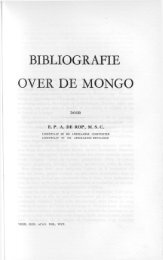(1973) n°3 - Royal Academy for Overseas Sciences
(1973) n°3 - Royal Academy for Overseas Sciences
(1973) n°3 - Royal Academy for Overseas Sciences
You also want an ePaper? Increase the reach of your titles
YUMPU automatically turns print PDFs into web optimized ePapers that Google loves.
— 512 —<br />
the exoerythrocytic schizonts (Fig. 3) had a characteristic morphology<br />
very different from those of P. vivax and P. cynomolgi.<br />
R o d h a in had been watching this work with interest because<br />
since 1940 he had been studying the behaviour of P. vivax<br />
in the chimpanzee, and particularly the splenectomised chimpanzee.<br />
As soon as we had reported our experiments on human<br />
volunteers he realised the great possibilities which his ape model<br />
offered <strong>for</strong> further research on the subject. He (R o d h a in 1953)<br />
accordingly inoculated intravenously chimpanzees with large<br />
numbers of sporozoites, did biopsies of the liver at various intervals<br />
and watched the course of the infection in the (splenectomised)<br />
animal. He was thus able to demonstrate the early<br />
stages of development of the parasite in the parenchyma cells<br />
of the liver at 4 days, to confirm the maturation time as<br />
8 days, and to show the appearance of « relapse » bodies<br />
9 months after the original infection. He found the relapse<br />
schizonts in the liver entirely by accident: he was searching <strong>for</strong><br />
filaria in the sections when he suddenly discovered a beautiful<br />
exoerythrocytic schizont and subsequently 3 others (R o d h a in<br />
1956).<br />
There is not time to describe in detail the novel techniques<br />
which Colonel Sh o r t t and I introduced in these researches.<br />
We realised from the start the importance of administering<br />
really massive doses of viable sporozoites, <strong>for</strong> no multiplication<br />
of the parasite occurs in the liver — one sporozoite growing<br />
into a single schizont. If the number of sporozoites in the<br />
inoculum were small, the search would resemble looking <strong>for</strong><br />
a « needle in a haystack ». Even a million sporozoites represent<br />
but a fraction of the number of parenchyma cells in the human<br />
liver; there<strong>for</strong>e a needle biopsy of the organ would be useless<br />
and a piece of tissue at least 2 cm square is necessary, which<br />
is obtainable only after laparotomy. Adequate staining of the<br />
parasite in the sections is of course of paramount importance,<br />
and the Giemsa Colophonium technique as modified first by<br />
Sh o r t t and Co o per and later by B r a y and myself<br />
( 1961), has proved to be ideal <strong>for</strong> its qualities of brilliance,<br />
differentiation and permanence. W e eventually introduced mass<br />
dissection of the salivary glands of infected mosquitoes and<br />
by using 4 teams, we were able to dissect 250 mosquitoes in an



